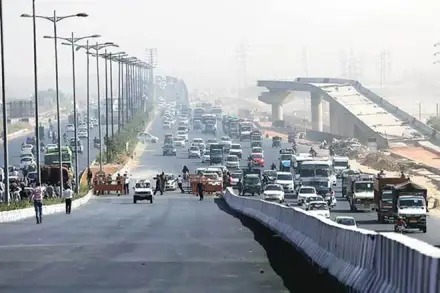 Image Source: The Financial Express
Image Source: The Financial Express
A comprehensive three-phase plan is underway to decongest the critical entry and exit points along National Highway-48 (NH-48) connecting Delhi and Gurugram, aiming to provide lasting relief to the nearly three lakh daily commuters who face severe bottlenecks, especially during peak hours.
Phase 1 focuses on reconfiguring entry and exit arrangements at four major locations: Mahipalpur, Shiv Murti, and two points at Shankar Vihar. The plan proposes designating Shankar Vihar and Mahipalpur as exit-only points, while entry points will be created near Shankar Vihar and Shiv Murti. This targeted approach is expected to streamline vehicle flow, particularly at notorious choke points like Shiv Murti, where spillover traffic often causes hour-long delays over a 6.9-km stretch.
Phase 2 includes the construction of a new 3.6-km, eight-lane tunnel connecting Dwarka Expressway directly to IGI Airport, set to open by the end of May 2025. The tunnel, India’s widest, will divert a significant portion of airport-bound and through traffic away from the congested surface roads, easing pressure on NH-48 and improving connectivity between Delhi, Gurugram, and northern destinations.
Phase 3 involves plans for an elevated corridor from INA to the Gurgaon-Faridabad Road, with the National Highways Authority of India (NHAI) inviting bids for a detailed project report. This elevated stretch, spanning 25-30 km, may include tunnels and underpasses, and is designed to provide seamless travel from East and South Delhi to the airport and Gurugram, further reducing congestion on the Ring Road and the Dhaula Kuan-Gurgaon stretch.
With these coordinated infrastructure upgrades, the Delhi-Gurugram corridor is poised for significant traffic relief and enhanced regional connectivity in the coming months.
Source: Times of India, Economic Times, New Indian Express, CNBC-TV18
Advertisement
Advertisement




